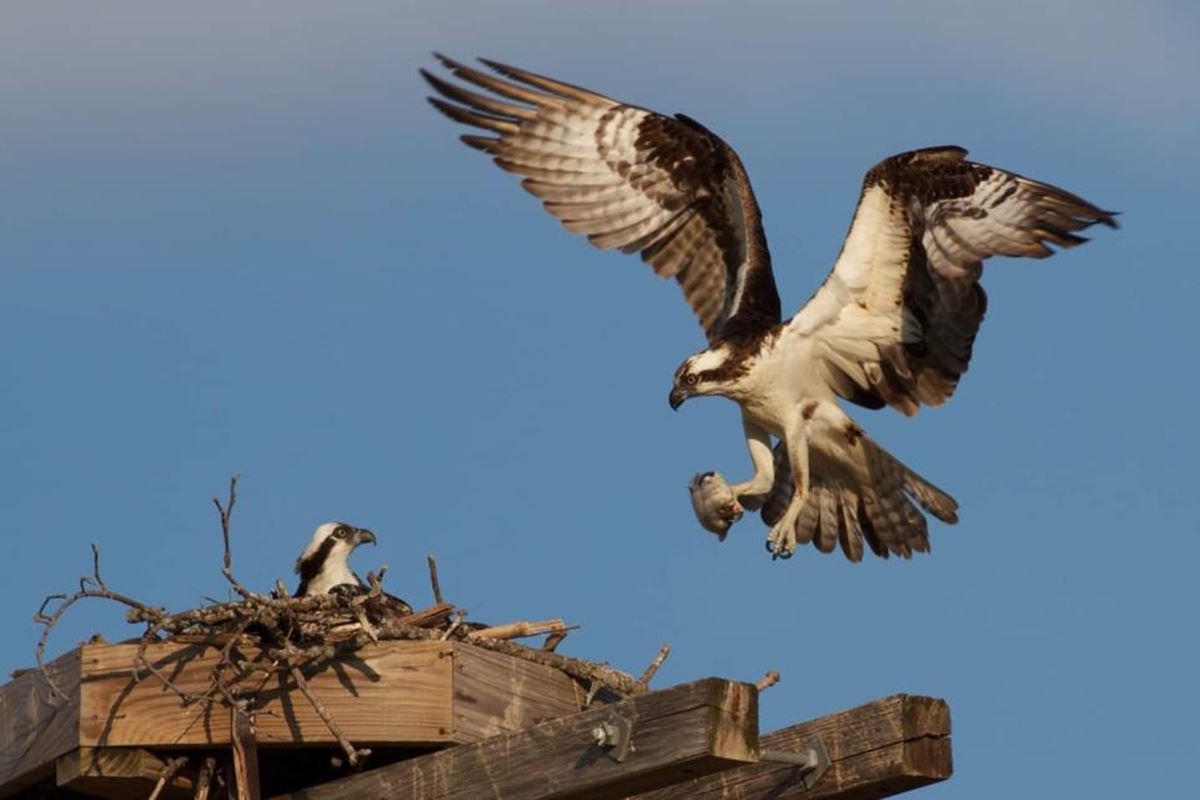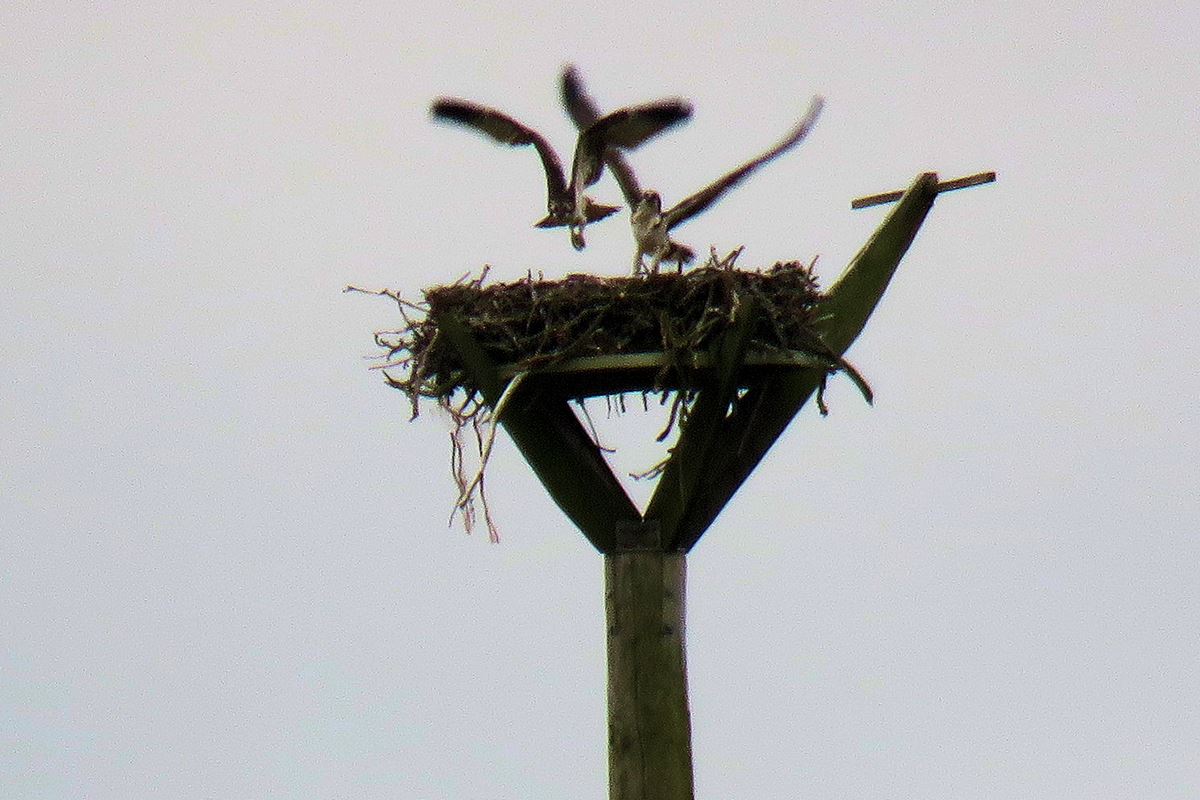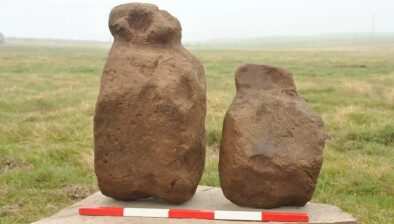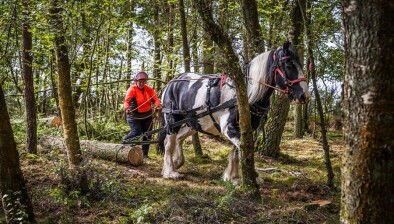And finally… SSEN Transmission’s purpose-built osprey nest proves a success
SSEN Transmission’s Alyth substation team bid a fond farewell to three osprey chicks last month, as they spread their wings and fledged their purpose-built home to start their first journey to Africa.

It was a bittersweet moment for the team as the chicks had become an important part of the daily works on site over the last six months.
The three chicks were reared by a pair of ospreys who have made their home on a specially-built nesting platform originally constructed by SSEN Transmission in March 2014.
The platform was created as an alternative home for the ospreys ahead of the commencement of a programme of upgrade and reinforcement work to the East Coast transmission network, after the birds were spotted nesting at the top of one of SSEN Transmission’s 48-metre-high electricity towers, which was scheduled for maintenance as part of the project.
To make sure the birds were safe it was important to try and encourage them to find an alternative nest home, and much to the delight of the environmental team, the ospreys immediately selected to nest in the new purpose built 25m-high platform on their return the following spring. In fact, they were so impressed with their new platform, they have been returning there to breed every year since. Since that first breeding season in 2014, a total of 14 osprey chicks have been observed to have fledged from the new site.
The new £86 million substation near Alyth is being constructed as part of the enhancement of the transmission network, with main construction works getting underway in the summer this year. Site teams have been taking great care to mitigate against any impact around the ospreys since they returned to breed in early April this year. Ornithologists were onsite every day to observe the ospreys and ensure steps were being taken by our contractors to minimise any impact on the birds. The birds have since left the nest to begin their migration to Africa, and it is hoped that they will return to breed again in the spring next year.

A walkway and viewing platform, complete with information boards, has been created to allow site visitors to safely view the birds without disturbing them, and should the birds return next year members of the community and local primary schools will be welcomed to see them.
Specialist advice was taken from osprey expert, Roy Dennis MBE, who helped advise the design of the purpose-built nest as well as the mitigation measures to be taken during the early construction phase of the project. Roy visited the site in the summer to see the ospreys and see for himself the work underway.
Roy said: “Working with the team at SSEN Transmission and their contractors Balfour Beatty and Siemens-BAM has reassured me that they are doing everything they can to prioritise the welfare of the ospreys in the area.
“It is clear that they are environmentally focused in all of their work and are adopting extensive procedures to ensure any impact is minimised.
“I’m delighted that another three chicks have successfully fledged this year from the platform built in 2014… another great example of how firms like SSEN Transmission can work to take care of the natural environment around them.”
Lead project manager Archie Munro said: “It’s been a real joy watching the ospreys return to the purpose-built nest each year, and this year was extra-special seeing three healthy chicks successfully fledge now that construction has started.
“Protecting the environment is a genuine priority on this project, and we’ve worked hard along with our contractors Siemens-BAM and Balfour Beatty to ensure we remained focused on reducing any impact at all times.
“We restricted our vehicle movements around the base of the nest and changed our work schedule, so that the more disruptive works took place outwith the crucial incubation stages to ensure that the chicks successfully hatched.
“We had ornithologists onsite every day to observe the ospreys and check for any signs of distress or disturbance, meaning we were able to closely track the birds’ development.
“Now the ospreys have migrated south for the winter we’re looking to progress with the nosier piling work throughout the autumn and winter months, which we hope to have completed before Christmas and certainly in advance of the birds hopefully returning again in the spring.
“Ospreys are such an iconic species in Scotland, and I think everyone onsite has really enjoyed watching the chicks grow and successfully take flight this summer. We all hope to see the ospreys return and look forward to welcoming the community and local primary pupils to see the birds for themselves via our new viewing platform next spring.”
The £86m development of the Alyth substation is part of a wider project to upgrade the East Coast Transmission network. Once complete it will enable the connection of new renewable generation to the grid, helping to facilitate the transmission to net zero emissions. The project at Alyth is on course to be completed in winter 2023.














